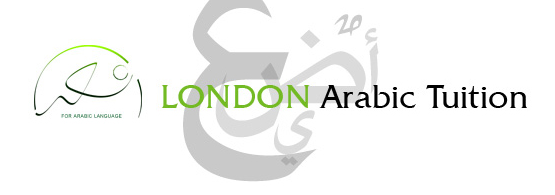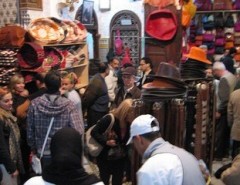Full Guide To Levantine Arabic
This article is essential for our intense training series on Arabic tongues.
Assuming you know some Standard Arabic and need to see how the vernaculars vary, our Guide to Arabic Dialects will assist you with getting everything rolling. We’ve additionally distributed top to bottom aides in Jordanian and Egyptian Arabic.
In this article, we take a gander at perhaps the most generally got dialect: Levantine Arabic.
Searching for proficient Levantine Arabic interpretation? Head over to our statement page to get everything rolling.
The Levant alludes to the space situated in the Eastern Mediterranean and incorporates Lebanon, Palestine, Syria, Jordan in the cutting edge world. The term the Levant entered English in the late fifteenth century from French. It gets from the Italian Levante, signifying “rising”, suggesting the ascending of the sun in the East. What could be compared to the term is known as Al-Mashriq اَلْـمَـشْـرِق, signifying “the land where the sun rises”. Because of the district’s rich social and strict legacy, Levantine has turned into an appealing lingo for understudies wishing to learn Arabic and for researchers intrigued by the locale. The huge number of exiles coming from the district’s nations likewise implies that Levantine Arabic is spoken broadly across the world.
Levantine Arabic is surely known across the Arab world and exiles from Levant nations have helped the tongue spread all through the world. The tongue has additionally acquired ubiquity over the most recent couple of years as the picked language of authentic dramatizations, TV series, and named Turkish dramas.
History
Aramaic was the most widely used language of the Middle East from about the twelfth century BC until the ninth century AD when the spread of Islam permitted Arabic to have its spot. Notwithstanding, the language shift that happened in the Levant was not an abrupt substitution of one language by another but instead a continuous and extended interaction. Numerous researchers concur that 50% of the linguistic construction of Central Levantine Arabic is because of Syriac impacts, a vernacular of Middle Aramaic.
Robert Gabriel, Syriac educator and leader of the Association of Syriac Language Friends gives the case of the sentence “ijul-uwlad,” signifying “the youngsters came.” In this sentence, the action word “iju,” which goes before the subject “al-uwlad” is in the plural structure. In old-style Arabic, such a sentence would be off-base, in light of the fact that an action word goes before the subject remaining parts in the particular, even with a plural subject. In Syriac, plural goes with plural, manly go with manly, ladylike with feminine.1
Under the Ottoman guidelines, the district procured numerous Turkish expressions, for example, كندرة (kundara) for shoes and بوظة (boza) for frozen yogurt. Another model is the addition “ji”, which is frequently added to words to show callings. The word صابونجي (sabonji) implies cleanser (صابون) producer and the word كبابجي (kababji) implies somebody who makes kababs.
After the First World War and the breakdown of the Ottoman Empire, the Levant locale was split among French and British guideline. The social and phonetic trade that followed made an imprint on Levantine Arabic, particularly in nations like Lebanon where French is as yet utilized in day-to-day existence and as a vehicle of schooling.
A few instances of terms acquired from French and other Arabized French terms incorporate saying بلكون (balcon in French) for overhang, and إشكمان for a vehicle exhaust (échappement in French).
In nations like Jordan and Palestine, set under British tutelage, English had the bigger semantic impact and was the language of training in schools. Words, for example, جريدة (jareeda) for paper (from the English word diary) and سكرتير (sekreter) for secretary are a few models.
A trade can likewise be seen between Palestinian Arabic and Hebrew for certain words acquired from Hebrew to Arabic with practically no change (deši (grass), širutīm (latrines), eisik (business) while others are altered (the word masom, which means detour, is Arabized by adding the postfix “at” when utilized in the plural to become masomat).
A qualification ought to be made between metropolitan assortments of Levantine Arabic, which remain generally homogenous, and the country assortments that display huge changes, particularly in disengaged regions.
We can likewise recognize sub tongues, clear particularly in country populations2:
Northern Levantine Arabic, spoken in Lebanon, Northern Palestine and Syria.
South Levantine Arabic, spoken in Palestine among Nazareth and Bethlehem, in the Syrian Hauran mountains, and in western Jordan.
It ought to be noticed that Levantine Arabic not just differs from one country to another and from one locale to another yet in addition from one town to another. As transport and populace developments were moderately delayed to advance in certain spaces, tongues had the option to grow freely.
Sociological varieties can likewise be noted with migrant or bedouin networks talking unmistakable vernaculars from the neighborhood inactive (settled) communities.3 This can be found in Jordan where Arabic lingos spoken by bedouin clans contrast with the Arabic expressed in Amman, which additionally varies from that spoken in some rustic regions. Similar applies to various strict networks (Muslims, Christians, Jews). For instance, the Druze of the Hauran area in Syria talk a vernacular not the same as that of the nearby Muslims (likely in light of the fact that relocated from Mt. Lebanon)4.
Elocution
Because of these Ottoman, French and English effects on this specific area from the beginning of time, Levantine Arabic presents a few adjustments in the way to express most letters, moving towards a more straightforward and less difficult phonetic letter set. For instance, the letter ث is articulated as ت or س, contingent upon the word (for example يوم التلاتا/سابت). The ق is additionally generally articulated as ء, besides in specific rustic spaces of every nation (for example ورأة/ألب). The ذ becomes د or ز in the Levant (e.g.دنب/لزيز) while the letter ظ is articulated as ض or ز (for example ضهر/مزلوم).
In Damascus,/I/and/u/have converged to/ə/in shut syllables, yet not in Jerusalem.
Jerusalem: ruḥt ‘I went’, nimt ‘I rested’
Damascus: rəḥə t ‘I went’, nəmə t ‘I slept’.5
Syria is these days recognized by the utilization of مو rather than the مش utilized in the remainder of the Levant. For instance, ‘I’m distraught’ would be ‘أنا مش مبسوط’ in Lebanon, however ‘أنا مو مبسوط’ in Syria.
Jordanian individuals are, then again, referred to for articulating ق as G (for example قلبي is articulated ‘galbi’ rather than ‘qalbi’).
Language structure
The basic current state in Levantine Arabic is set apart by the expansion of the letter ب toward the start of the action word. For instance, assuming you need to say ‘I dance’, the Levantine identical would be ‘أنا برقص’.
The expansion of عم or عمّال before the action word is the Levantine variant of the current participle; for example ‘I’m moving’ is deciphered as ‘عم أرقص’ or ‘عمّال أرقص’.
The double structure in Arabic language known as the muthanna structure is one of the vital difficulties of learning Standard Arabic. In spite of different dialects, several (individuals, creatures or articles) isn’t alluded to similarly collectively of 3+ components; for example ولدٌ/ولدان/أولاد. Fortunately, this structure was killed in spoken Levantine Arabic to work with correspondence; for example ‘كمال ومريم عم يرقصوا’, rather than ‘كمال ومريم يرقصان’ in Modern Standard Arabic.
Standard Arabic additionally recognizes the female plural and manly plural structures, for example الرجال يرقصون/النساء يرقصْنَ. Levantine speakers additionally wiped out this qualification to additionally work with the utilization of Arabic in their day to day routines; for example ‘دانا ومريم وليلى عم يلعبوا بالدّار’ , instead of ‘دانا ومريم وليلى يلعبْنَ في الدّار’ in Modern Standard Arabic.
One more attribute of Levantine Arabic is the utilization of the pronoun هنّ, initially utilized in Modern Standard Arabic to allude to female plurals, as a comparable for ‘They’ for the two sexual orientations; for example هنّ عمّال يدرسوا.
Rundown of Keywords
English
Levantine Arabic
Hi (or standard hello)
مرحبا / أهلين
Great morning صباح الخير/صباحو
Goodbye
مسا الخير
Goodbye (when leaving)
تصبح على خير / مع السلامي / سلام
Excuse me
عن إزنك / عفوًا / لو سمحت
Please accept my apologies
بعتزر / لا تواخزني
Apologies, don’t stress over it
ولا يهمّك
Much thanks to you
شكرًا / يسلمو
The pleasure is all mine
تكرم / أهلا وسهلا / أهلين وسهلين
Who?
مين؟
What? شو؟/إشو؟
Where?
وين؟
When?
إيمت؟ / إيمتى؟
Why?
ليش؟
How?
كيف؟ / شلون؟
How are you?
كيفك؟ / شلونك؟
Present
بـ
Future
لح / حا / رح / بدي
Nullification (verbal)
ما / لأ
Nullification (predicate) (for example isn’t)
مش / مو
Check out our online course




Leave a Reply
You must be logged in to post a comment.